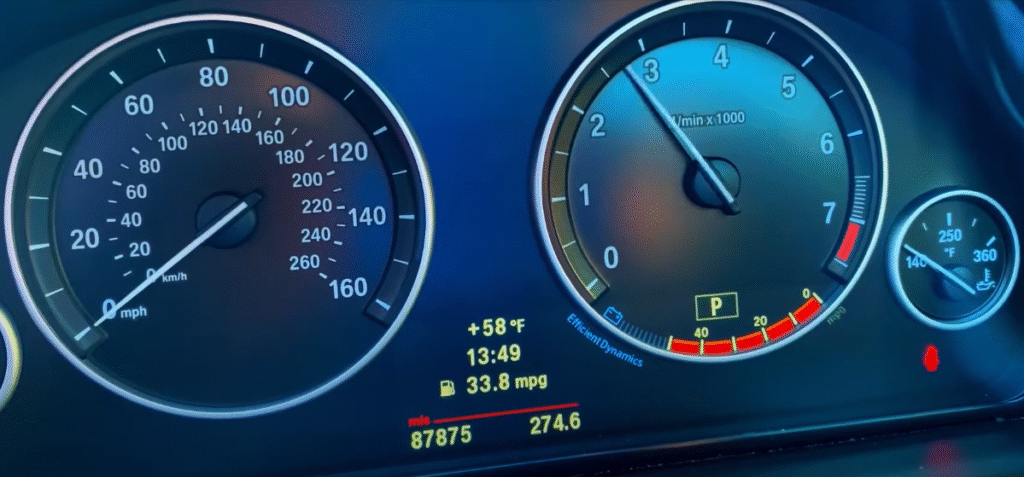Overfilled Mustang and Not Starting: Overfilling oil in your Mustang can cause fouled spark plugs and excess engine pressure, leading to a no-start issue. Simply drain the excess oil and check the spark plugs to fix the problem.
If you’re a Mustang owner, you likely understand the pride of driving a car known for its power and performance. However, when basic maintenance procedures, such as changing the engine oil, go wrong, your Mustang’s performance could take a significant hit. One common mistake is overfilling the oil, which can cause more harm than good.
The engine oil in your Mustang is essential for lubricating the engine components, keeping them cool, and ensuring smooth operation. When you overfill the oil, it can disrupt the delicate balance required for optimal engine function, potentially leading to engine misfires, rough idling, or even the car failing to start altogether.
This article aims to explain in detail why overfilling the oil in your Mustang could result in a no-start condition, the signs to look out for, and the steps you can take to fix the problem.
Contents
What Happens When You Overfill the Oil in the Mustang?
When you overfill the oil in the Mustang, it’s not just a matter of having a little more oil than necessary. The excess oil can cause multiple problems that can severely impact the engine’s performance and, in some cases, stop it from starting. Here’s how overfilled oil can lead to a no-start situation:
Oil Foaming and Aeration
If you put too much oil in the engine, the crankshaft can dip into the oil and cause it to foam. This happens because the crankshaft’s motion causes the oil to froth, introducing air bubbles into the oil. The result is aerated oil, which can’t lubricate the engine properly. Without proper lubrication, the engine’s moving parts experience increased friction, which can lead to overheating and, in extreme cases, engine failure.
Fouled Spark Plugs
Excess oil can also find its way into the combustion chamber. This can happen if the excess oil causes seals or gaskets to fail, leading to oil leaking into the cylinder. When oil enters the combustion chamber, it can foul the spark plugs, causing them to misfire. Spark plugs that are fouled with oil may prevent your Mustang from starting, as they are unable to ignite the fuel and air mixture required for combustion.
Increased Pressure in the Engine
Overfilled oil increases the pressure within the engine. As the engine operates, the oil pump circulates oil through the system. If the oil level is too high, it can cause excessive pressure in the engine, which can lead to leaks in seals or gaskets. In severe cases, this pressure can damage the engine’s components, making it difficult or impossible for the engine to turn over.

How to Diagnose an Overfilled Oil Issue in the Mustang
If your Mustang refuses to start and you suspect overfilled oil may be the cause, there are several ways to diagnose the issue. Here’s how you can check whether excess oil is preventing your Mustang from starting.
1. Check the Oil Level
Start by checking the oil level with the dipstick. This is the simplest way to determine if your Mustang is overfilled. If the oil level is above the maximum mark on the dipstick, then you’ve likely overfilled the oil. Be sure to check the oil when the engine is cold for the most accurate reading.
2. Look for Oil Leaks
If you notice any oil leaking from the engine, this could be a sign that overfilled oil has caused excess pressure in the engine. The pressure could have led to worn-out seals or gaskets, which may result in oil leaks. Leaking oil is not only bad for your engine but also dangerous for your car’s performance.
3. Excessive Exhaust Smoke
Excess oil entering the combustion chamber may lead to the engine burning oil, which can produce blue or gray smoke from the exhaust. If you notice this smoke, it’s a clear indication that overfilled oil is causing the problem.
4. Rough Idling or Engine Misfire
When the oil is overfilled, it can cause the engine to run rough, particularly at idle. You may notice sputtering, misfiring, or a rough idle as the engine struggles to properly combust the fuel. This is usually due to oil fouling the spark plugs or disrupting the air-fuel mixture.
How to Fix a Mustang with Overfilled Oil That Won’t Start
If your Mustang is overfilled with oil and won’t start, follow these steps to resolve the issue:
Step 1: Drain the Excess Oil
The first thing you need to do is drain the excess oil. If the oil level is above the maximum line, use an oil extractor pump or remove the drain plug to let the excess oil drain out. Be careful to drain only the excess and not all of the oil.
Step 2: Replace or Clean the Spark Plugs
After draining the excess oil, inspect the spark plugs. If they are fouled with oil, clean the spark plug or replace. Oil-fouled spark plugs can prevent the engine from starting by disrupting the ignition process. Ensure the new or cleaned spark plugs are installed correctly before attempting to start the engine.
Step 3: Check the Engine for Damage
Once the excess oil is removed and the spark plugs are cleaned or replaced, check for any signs of internal damage. Look for leaks around seals or gaskets. If any components appear damaged, they should be replaced before starting the engine.
Step 4: Attempt to Start the Engine
After taking care of the above steps, attempt to start your Mustang. If the oil level is now correct, the spark plugs are clean, and there are no oil leaks, the engine should start normally. If it still doesn’t start, it’s time to consult a mechanic to check for further internal engine damage.
How to Prevent Overfilling Oil in Your Mustang
Prevention is always better than cure. Here are some tips to ensure you don’t overfill the oil in your Mustang again:
- Follow the Manufacturer’s Oil Guidelines: Always adhere to the recommended oil quantity specified by the manufacturer. Overfilling is a common mistake that can easily be avoided by checking the manual.
- Use the Correct Tools: When changing the oil, use a measuring device to ensure you add the correct amount of oil. Avoid relying solely on visual inspections, as these can be inaccurate.
- Check the Oil Level Regularly: Periodically check your Mustang’s oil level to ensure it is within the recommended range. Regular checks can help you spot problems early before they escalate.
Frequently Asked Questions
Here are some FAQs about overfilling Mustang and not starting –
1. Can overfilled oil cause a Mustang to not start?
Yes, overfilled oil can cause oil to enter the combustion chamber, foul the spark plugs, and create excessive pressure in the engine, all of which can prevent the Mustang from starting.
2. How do I know if my Mustang has too much oil?
Check the dipstick; if the oil level is above the maximum mark, the oil is overfilled.
3. What should I do if my Mustang’s oil is overfilled?
Drain the excess oil, check the spark plugs for oil fouling, clean or replace them if necessary, and inspect for any engine damage.
4. Can overfilled oil cause other damage to my Mustang’s engine?
Yes, overfilled oil can cause leaks, engine knocking, and overheating, which can damage seals, gaskets, and other components.
5. How can I prevent overfilling oil in the future?
Always follow the manufacturer’s oil capacity guidelines, use the correct measuring tools, and regularly check the oil level.
Conclusion
Overfilling oil in your Mustang can lead to a host of problems, including a no-start condition. If you’ve accidentally overfilled the oil, it’s important to take immediate action by draining the excess oil, inspecting the spark plugs, and ensuring there are no leaks or other damages. Regular maintenance and correct oil handling can prevent this issue from happening in the future, ensuring that your Mustang remains in top condition and starts reliably every time.




